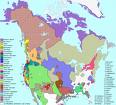In the Arctic, there exists over 40 different indigenous languages, which had survived for centuries or even thousands of years in small communities  throughout the northern hemisphere. Most of these languages can still be found, spoken by a small group or individual, but in many cases, they have come close to extinction. In some cases, the reason for the weakening of the language has been the decline of the amount of its speakers. In other cases, local and national policies and leadership have had an impact on the language spoken in a particular area. What is, however, common for almost all the Arctic indigenous languages is the fact that in the past 100 years they have gone through an immense change, first several decades to a negative direction and now for the past two decades to a more positive direction.
throughout the northern hemisphere. Most of these languages can still be found, spoken by a small group or individual, but in many cases, they have come close to extinction. In some cases, the reason for the weakening of the language has been the decline of the amount of its speakers. In other cases, local and national policies and leadership have had an impact on the language spoken in a particular area. What is, however, common for almost all the Arctic indigenous languages is the fact that in the past 100 years they have gone through an immense change, first several decades to a negative direction and now for the past two decades to a more positive direction.
From the late 19th century, the indigenous languages of the Arctic have been increasingly exposed to colonial powers. Especially in the second half of the 20th century, the indigenous peoples went trough an immense assimilation process organized by the state authorities. Indigenous children were in many cases educated in public schools, often in boarding schools, and their ties to  their own culture and language were weakened intentionally. Due to the assimilation process along with the decline of indigenous inhabitants, many of the languages were about to extinct when the international indigenous movement emerged in the beginning of the 1970’s. The dominant languages in the Arctic today are Russian, English and Scandinavian languages, all which have been introduced to the Arctic inhabitants by a colonial power. However, in the recent years the indigenous languages have gained stronger status within the Arctic states either as protected cultural heritage or as an official language.
their own culture and language were weakened intentionally. Due to the assimilation process along with the decline of indigenous inhabitants, many of the languages were about to extinct when the international indigenous movement emerged in the beginning of the 1970’s. The dominant languages in the Arctic today are Russian, English and Scandinavian languages, all which have been introduced to the Arctic inhabitants by a colonial power. However, in the recent years the indigenous languages have gained stronger status within the Arctic states either as protected cultural heritage or as an official language.
In the Scandinavia, the Saami languages are protected by law and have a status of an official language within the Saami homeland in both Finland and Norway. In Sweden, the Sami languages can be used in public affairs in the municipalities of Arjeplog, Gällivare, Jokkmokk and Kiruna.
 In Greenland, along with the establishment of the Greenland Self-Government in June this year, the Inuktitut became the only official language, Danish having being another official language in Greenland since 1950’s.
In Greenland, along with the establishment of the Greenland Self-Government in June this year, the Inuktitut became the only official language, Danish having being another official language in Greenland since 1950’s.
In Nunavut, Canada, all three languages, Inuktitut, English and French became Nunavut’s official languages in July 1, this summer, when Canadian government enacted a new Inuit Language Protection Act.
The situation in Russia is somewhat different. Under law, many of the indigenous languages are protected as a cultural heritage, but in reality their status varies enormously.
Even though many positive steps have been taken to revive the valuable heritage of Arctic indigenous peoples, much is still undone to guarantee the indigenous languages’ survival and status within the eight Arctic states. With the strong involvement of indigenous youth and establishment of new technologies, it has become easier for Arctic inhabitants to hold on to their culture and language despite the long distances and educational opportunities sought outside the Arctic. In addition, the influence the strong international indigenous movement has had on national policies has made the legal status of the languages better and in many cases they have gained special protection within the state system.
